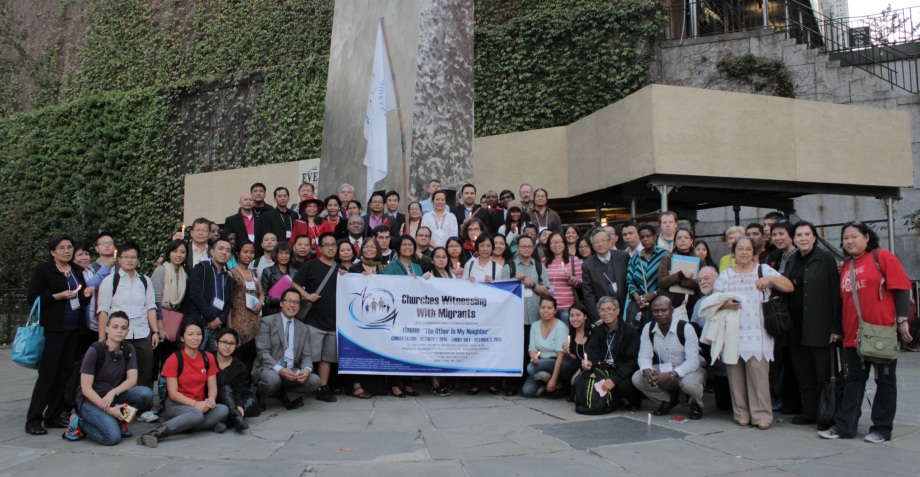“One in evert four people experiences mental health issues – yet more than 40% of the countries worldwide have no mental health policy” (“How should we talk about mental health?,” 2013). This quote is crucial to spreading awareness about the severity of mental health and all around physical diversity. What ways can we retain or restore dignity to people with physical adversity and/or mental illness?
- Treat all people equal, whether they have a physical adversity or not. Harriet McBryde Johnson is the perfect example of someone who has proven that anyone is capable of achieving their dreams as long as one sets their mind to it, and whether one is seen as capable to society or not. Harriet was a woman with a physical adversity who broadened her career as an author, attorney, and disability rights activist. She was disabled due to a neuromuscular disease and used a motorized wheelchair (Ervin, 2004).
- Avoid calling those with physical adversities words like “crazy” or “psycho” (“How should we talk about mental health?,” 2013). These stigmatizing words become quickly embedded in people’s minds from a young age when one may be bullied or made fun of for being “different” (“How should we talk about mental health?,” 2013). This about this.. “Should we call cancer a ‘cell cycle problem’? Calling serious mental illness a ‘behavioral health problem’ is like calling cancer a ‘pain problem'” (“How should we talk about mental health?,” 2013). Saying things like this about cancer isn’t realistic is it? Why should it be any different for those who have mental health problems or physical adversities? It shouldn’t be. One must avoid using degrading terms and words to define those just because they differentiate from them, and realize that those with these adversities obtain an equal amount of self worth and dignity as anyone without adversities.
- Separate the person from the problem (“How should we talk about mental health?,” 2013). Speak of “someone with schizophrenia,” not the schizophrenic,” making this distinction honors and respects these individuals (“How should we talk about mental health?,” 2013). “What you’re really saying is, this is something that’s not part of a person; it’s something the person is suffering from or is living with, and it’s a different thing from the person” (“How should we talk about mental health?,” 2013). Making this distinction clear serves to uphold the dignity of those associated and gives them a sense of appreciation and respect. Those who have been so blessed as to not have been born with a physical diversity should realize that they are blessed; but also must come to the realization that one does not obtain a greater amount of self worth, dignity, or respect simply because of this gift from God. Those with physical adversities were put on this earth for a reason, and to accomplish great things just as the rest of us obtain the ability to do. ANYONE is capable of ANYTHING. Limitations cannot be set upon anyone BY anyone.
- Along with the article about Harriet Johnson, the article “How should we talk about mental health,” explains that Steve Jobs and Einstein both encountered and dealt with physical adversities. These individuals were among some of the smartest people of all time. This is discussed throughout the category of recognizing the amazing contributions of people with mental health differences (“How should we talk about mental health?,” 2013). Einstein and Steve Jobs are only mentioned because they have passed away, however, there are countless geniuses in this world with physical adversities doing amazing things that we are not even aware of. (“How should we talk about mental health?,” 2013). One must serve to avoid underestimating ANYONE’S capabilities.
Ervin, Mike. “Person of the Year. Harriet McBryde Johnson: A Life Well Lived – New Mobility.” New Mobility. 01 Jan. 2004. Web. 11 Apr. 2016.
“How Should We Talk about Mental Health?” Ideastedcom. 18 Dec. 2013. Web. 11 Apr. 2016.


 This photo upholds the human dignity these two ladies because this picture illustrates care, love, and compassion. The elderly woman’s dignity is being upheld by the young girl because she is caring for her and making sure that she is being taken care of. The care given to her by this woman is giving her a sense of worth and being appreciated. The feeling of accomplishment is achieved by the young women by caring for the elderly woman, resulting in the upholding of her human dignity due to the feeling of accomplishing a task that is so vigorous and humble. I work with the elderly so can relate first hand with the upholding of my dignity I benefit from while working with the elderly.
This photo upholds the human dignity these two ladies because this picture illustrates care, love, and compassion. The elderly woman’s dignity is being upheld by the young girl because she is caring for her and making sure that she is being taken care of. The care given to her by this woman is giving her a sense of worth and being appreciated. The feeling of accomplishment is achieved by the young women by caring for the elderly woman, resulting in the upholding of her human dignity due to the feeling of accomplishing a task that is so vigorous and humble. I work with the elderly so can relate first hand with the upholding of my dignity I benefit from while working with the elderly. This photo upholds the dignity of the migrants in this picture due to the support being shown by the church. This support will provide these migrants with the feeling of love, importance, and worth. There are many people on this earth who do not participate in the support of migrants while find jobs and opportunities to become stable in order to support themselves. This photo demonstrates first hand what it looks like to step back and treat migrants like the rest of us and remembering that their dignity must be upheld as well. The upholding of everyone’s dignity is important in order to achieve happiness and fulfillment among all. Relating back to the article Wisdom Dignity, and Justice: Higher Education as a Work of Mercy it was stated, “Unlike other strands of Christianity, it has continued to believe in the basic intelligibility of creation and in the basic capacity of the human mind to understand what is revealed in creation. Although the Catholic tradition, like others, has taken seriously the “human condition” limited by human nature and damaged by human sin, it had never thought that humans are either limited or so injured and incapacitated that they cannot learn (however partially) about the universe and about humanity itself” (Farley, p.4). This statement sends me the message that nobody should be singled out, or discriminated against, or underestimated just because of what ethnicity they are and what religion they participate in. This picture is the perfect example of making sure that everyone is given an equal opportunity despite our differences.
This photo upholds the dignity of the migrants in this picture due to the support being shown by the church. This support will provide these migrants with the feeling of love, importance, and worth. There are many people on this earth who do not participate in the support of migrants while find jobs and opportunities to become stable in order to support themselves. This photo demonstrates first hand what it looks like to step back and treat migrants like the rest of us and remembering that their dignity must be upheld as well. The upholding of everyone’s dignity is important in order to achieve happiness and fulfillment among all. Relating back to the article Wisdom Dignity, and Justice: Higher Education as a Work of Mercy it was stated, “Unlike other strands of Christianity, it has continued to believe in the basic intelligibility of creation and in the basic capacity of the human mind to understand what is revealed in creation. Although the Catholic tradition, like others, has taken seriously the “human condition” limited by human nature and damaged by human sin, it had never thought that humans are either limited or so injured and incapacitated that they cannot learn (however partially) about the universe and about humanity itself” (Farley, p.4). This statement sends me the message that nobody should be singled out, or discriminated against, or underestimated just because of what ethnicity they are and what religion they participate in. This picture is the perfect example of making sure that everyone is given an equal opportunity despite our differences. This is a photo I took at my cousin Natalie’s wedding over the weekend. This is a picture of Natalie and her brand new husband Ben kissing after feeding each other their first piece of wedding cake at their reception! This photo upholds the dignity of Natalie and Ben because it demonstrates the adamant love that they have for each other. When I revealed this photo to Natalie later on that night at her reception, she began to cry and said thank you. She was so happy that I was able to capture such an intimate moment between her and Ben on their special night. Leaving their wedding that night, I had such an amazing feeling with the knowledge of knowing that I was able to uphold Natalie and Ben’s dignity within such a special picture.
This is a photo I took at my cousin Natalie’s wedding over the weekend. This is a picture of Natalie and her brand new husband Ben kissing after feeding each other their first piece of wedding cake at their reception! This photo upholds the dignity of Natalie and Ben because it demonstrates the adamant love that they have for each other. When I revealed this photo to Natalie later on that night at her reception, she began to cry and said thank you. She was so happy that I was able to capture such an intimate moment between her and Ben on their special night. Leaving their wedding that night, I had such an amazing feeling with the knowledge of knowing that I was able to uphold Natalie and Ben’s dignity within such a special picture.

